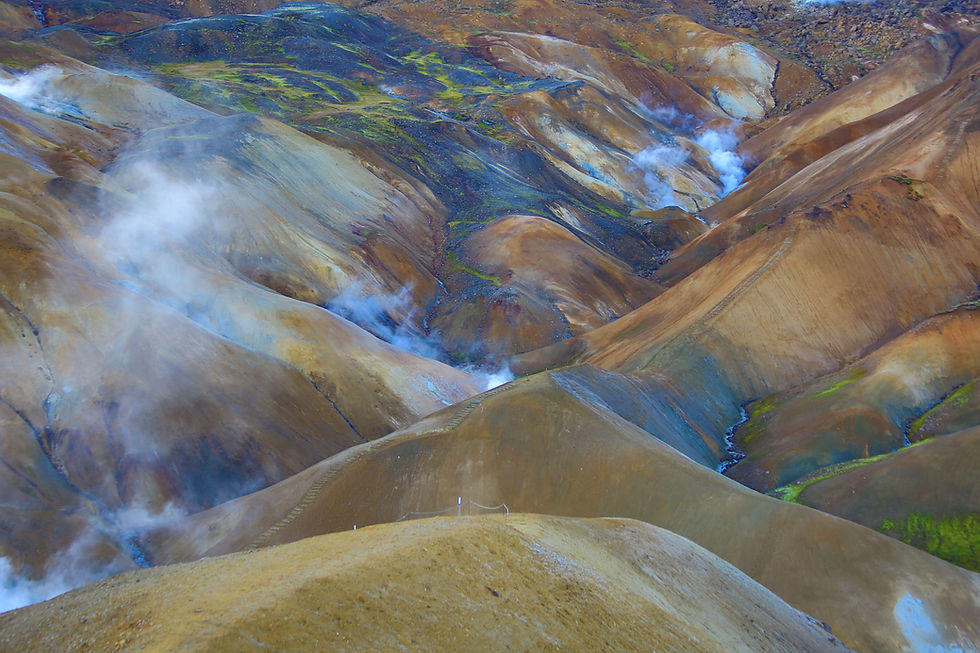North Kohala, Hawai'i
- Apr 24, 2020
- 4 min read
Updated: Apr 19, 2024
North Kohala is the birthplace of King Kamehameha I, who united all the Hawaiian islands under his rule. His royal birth was foretold by Hawaiian tradition that a great star will appear in the sky before his birth. In fact, the year he was born coincided with Halley's comet passing earth in the year 1758. At Upolu Point, one can visit the birth stones where King Kamehameha was born.

Kohala comprises of primarily rural communities with a long history in ranching and farming. The largest ranch in the area is Parker Ranch which encompasses an area of approximately 204.6 sq miles; nearly twice the size of the island of Penang where I was born. It is the oldest ranch in all of America, predating many ranches in California and Texas!
Parker Ranch was started by John Parker who was 19 years old when he jumped ship in Hawaii after an adventure in China in 1812. Today it is the fifth largest land owner in Hawaii.
In the 1900's, sugar was king in North Kohala. There were many sugar cane plantations popping up everywhere along the Kohala Coast, especially on the side facing the Pacific Ocean as the weather there was suitable to grow cane. As the need to quench the thirst of the cane fields, many laborers were employed as flume builders and irrigation diggers to divert fresh sparkling water from the slopes of Kohala Mountain into the cane fields. Many of these laborers built communities dotting the coastlines and on the foothills of Kohala. The last sugar cane plantation shuttered in 1990, turning some of these old townships that still exist till today into art galleries and eateries. One such township is Hawi. The no longer functioning water flumes have been turned into fun rides with kayaks and rubber tubes managed by these plantation companies.
There are two ways to reach Hawi - via highway 270 from Waikoloa or highway 250 from Waimea/Kamuela. One offers a dry coastal scene while the other through rolling hills which can be rainy and covered in fog. Hawi with its paniolo (cowboy) like township has wooden store fronts sporting bright primary colors, while the road to nearby Kapa`a is a rural drive passing the famous Kamehameha pohaku (rock). The rock is marked with a tourist symbol and is said to be the identifier of the next king should the person be able to carry it from its resting place. Additionally, there is the brightly painted society house ( The Tong Wo Society Cemetery) which stands as a reminder of the Chinese that came to work here during the plantation days.
At the end of highway 270 the road abruptly gives way to a very steep pali or cliff, forcing many cars to make a very tight u-turn. It is here that one can truly appreciate the remoteness and the beauty of the Kohala Coast; with its surrounding wilderness and dramatic ocean swept cliffs. From this vantage point one peers into the valley below called Pololu; a once thriving village. We've hiked into the valley twice before, and the last time we ventured as far as the second valley known as Honokane Nui.

It is along this remote coast that many valleys and cliffs stretch southeasterly towards Waipio. Today these are mostly uninhabited except for Waipio and the occasional research campsite. Back then these valleys once housed small communities of ditch and irrigation workers, mostly Japanese, who were brought here for their tunnel and trench masonry skills. The valleys were very exposed to the Pacific Ocean, and tsunamis are quite frequent in this area.


After one such tsunami event, coupled by a dying industry, these small communes never recovered; though one can still find remnants of old stone walls and dwellings left standing.
To get to Honokane valley, we had to hike past the initial valley of Pololu, then climbed up to the next hill. At the top of the hill, one has a spectacular view of what is to come.
Beyond this hill, we had to dropped back down to the next valley which is called Honokane Nui. The path is no longer there as it was destroyed by a massive landslide generated from an earthquake in 2006. The original trail takes one down into Honokane valley via a series of switchbacks. When we went, it was basically a precipitous drop down to the foot of the hill with an aid of some ropes!
Once we got down unscathed, we explored the area and we came across many old rock walls, and signs of camping activities. We followed the Honokane Nui stream out to the ocean and onto the rocky beach.
The ocean was rough and windy. Its black sand beach was littered with driftwood and large rocks. We could imagine how dramatic it would be should there had been a tsunami. With the narrow valley walls, it would seem that there is no where to run to. Hike of the video here.

For the intrepid and perhaps those who are a little foolhardy, hikers can attempt to hike across this area from Pololu to Waipio valley. Although it may seem similar to the Kalalau trail on Kauai, because it is uncut and wild, it will take anywhere from 8-10 days to complete and it would require a lot of way-finding and bushwhacking. Not at all for the feint hearted!
It is here that one can see the 3rd tallest waterfall in Hawaii ( and 13th tallest in the world) named Waihilau Falls, plunging down 2,600 feet into Honokane Valley.

Here is the video to the helicopter flight over North Kohala.
For more information about another watershed in the Kohala Mountains click this link below























Comments